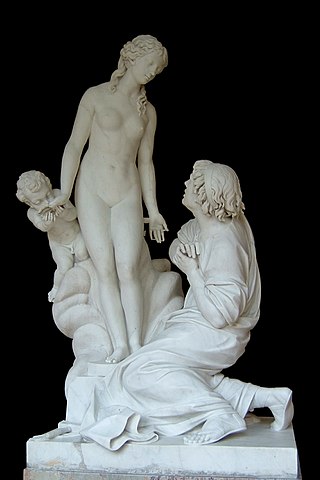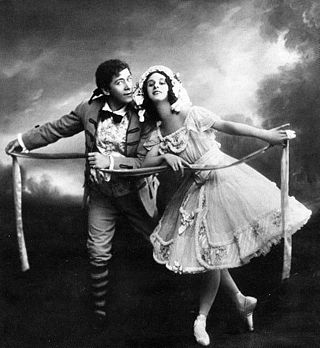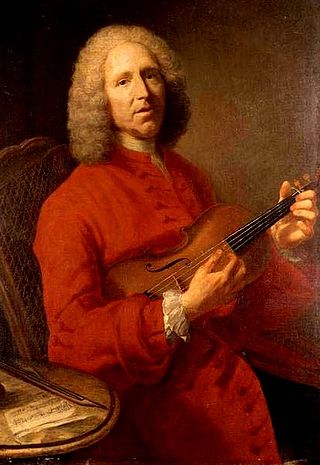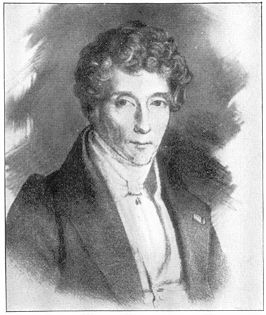Pygmalion or Pigmalion may refer to:

Anna Pavlovna Pavlova was a Russian prima ballerina. She was a principal artist of the Imperial Russian Ballet and the Ballets Russes of Sergei Diaghilev, but is most recognized for creating the role of The Dying Swan and, with her own company, being the first ballerina to tour the world, including South America, India, Mexico and Australia.

Agalmatophilia is a paraphilia involving sexual attraction to a statue, doll, mannequin, or other similar figurative object. Agalmatophilia is a form of object sexuality.

Galatea is the post-antiquity name popularly applied to the statue carved of ivory alabaster by Pygmalion of Cyprus, which then came to life in Greek mythology.

Die schöne Galathée is an operetta in one act by Franz von Suppé to a German libretto by the composer and 'Poly Henrion' .*

Marius Ivanovich Petipa, born Victor Marius Alphonse Petipa, was a French and Russian ballet dancer, pedagogue and choreographer. Petipa is one of the most influential ballet masters and choreographers in ballet history.

In Greek mythology, Pygmalion was a legendary figure of Cyprus. He is most familiar from Ovid's narrative poem Metamorphoses, in which Pygmalion was a sculptor who fell in love with a statue he had carved.

Marie Sallé (1707–1756) was a French dancer and choreographer in the 18th century known for her expressive, dramatic performances rather than a series of "leaps and frolics" typical of ballet of her time.

Pygmalion and Galatea, an Original Mythological Comedy is a blank verse play by W. S. Gilbert in three acts based on the Pygmalion story. It opened at the Haymarket Theatre in London on 9 December 1871 and ran for a very successful 184 performances. It was revived many times, including an 1883 production in New York starring Mary Anderson as Galatea.

Nikolai Gustavovich Legat was a ballet dancer, choreographer and teacher.

Pigmalion, more commonly today Pygmalion, is an opera in the form of a one-act acte de ballet by Jean-Philippe Rameau first performed on 27 August 1748 at the Paris Opera. The libretto is by Ballot de Sauvot. This work has generally been regarded as the best of Rameau's one-act pieces. He was said to have composed the work in eight days.

Galatea, or Pygmalion Re-Versed is a musical burlesque that parodies the Pygmalion legend, and specifically W. S. Gilbert's 1871 play Pygmalion and Galatea. The libretto was written by Henry Pottinger Stephens and W. Webster. The score was composed by Wilhelm Meyer Lutz.
Pygmalion is the most influential dramatic work by Jean-Jacques Rousseau, other than his opera Le devin du village. Though now rarely performed, it was one of the first ever melodramas. It is formed of spoken monodrama with instrumental musical interludes and thus can be credited with spreading a new theatrical genre, especially in German-speaking areas of Europe. He wrote it in 1762, with music by Horace Coignet. It was first performed at the Hôtel de Ville, Lyon, in 1770. The work is considered a turning point for its author, who also wrote The Social Contract that same year.

Pygmalion is a monodrama in one act by composer Georg Benda with a German libretto by Friedrich Wilhelm Gotter. The opera's first performance was at the Ekhof Theatre, the court theatre in Gotha, on 20 September 1779. Pygmalion was the fourth of the five theatrical collaborations of Benda and Gotter. Gotter based his text on Jean-Jacques Rousseau's 1762 play Pygmalion. Benda's melodrama is unusual as it has no singing roles. Two of the three characters, Pygmalion and Galatea, are spoken roles; the other, Venus, is silently acted on stage.

Pimmalione (Pygmalion) is an opera in one act by Luigi Cherubini, first performed at the Théâtre des Tuileries, Paris, on 30 November 1809. The libretto is an adaptation by Stefano Vestris of Antonio Simone Sografi's Italian translation of the text Jean-Jacques Rousseau wrote for his scène lyriquePygmalion (1770). It is based on the Classical legend of the sculptor Pygmalion.

Pygmalion and the Image is the second series of four oil paintings in the Pygmalion and Galatea series by the Pre-Raphaelite artist Edward Burne-Jones which was completed between 1875 and 1878. The two collections may be seen below, in the Gallery, the first being now owned by Lord Lloyd Webber, and the second housed at the Birmingham Museum & Art Gallery. This article deals with an appraisal of the second series.
Pygmalion and Galatea is an 1898 French silent trick film directed by Georges Méliès, based on the ancient Pygmalion myth.

Eugenia Ivanovna Kolosova was a Russian ballerina.

Evgenia Pavlovna Sokolova was a Russian dancer and educator. She was one of the most famous ballerinas of her period and later became a famous ballet teacher.

Tanagra is a polychromic marble sculpture created by French artist Jean-Léon Gérôme (1824–1904) as a personification of the "spirit of Tanagra," his own mythic invention tied to the Tanagra figurines from the village of that name in ancient Greece. The sculpture was first shown at the Paris Salon of 1890. Gérôme subsequently created smaller, gilded bronze versions of Tanagra; several versions of the "Hoop Dancer" figurine held by Tanagra; two paintings of an imaginary ancient Tanagra workshop; and two self-portraits of himself sculpting Tanagra from a living model in his Paris atelier. These sculptures and paintings comprise a complex, self-referential artistic program in which one of the most celebrated artists of his generation explored reception of Classical antiquity, creative inspiration, doppelgängers, and female beauty.
















